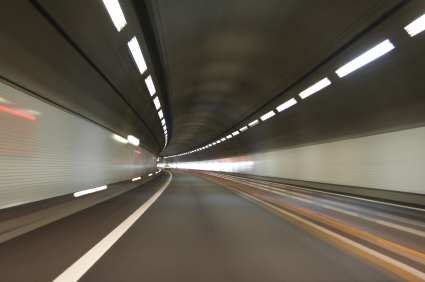London has a treasury of unused tunnels. Why not use them, like other cities do?
Solutions to urban space problems usually involve a mere rearrangement of what can be seen. In London, the need to cram more and more into a fixed space demands “thinking big”, which has become a euphemism for “thinking up”. In the capital, as in other cities, developers are trying to fit as much as they can between the earth and the sky.
There are literally dozens of skyscraper projects planned or under way across London, most meeting with the eager approval of the mayor. But tall buildings in the wrong place can be a big problem, dwarfing the vernacular architecture, blocking light and historic views, and creating an inhuman cityscape of glass and steel. In fact Unesco is so alarmed by the possible transformation of London’s skyline that there has been talk of putting the World Heritage sites of Westminster and the Tower of London on its danger list, alongside those in war zones such as Samarra in Iraq and the minaret at Jam in Afghanistan.
If we accept that there are problems with building up, perhaps it’s time to consider looking down – not at our feet, but at the ground beneath. Maybe we should start thinking about what can be done with what we can’t see.
Over the past few decades, London’s flirtation with building below ground has been at best half-hearted; the capital is littered with abandoned underground caverns and tunnels built in more adventurous and ingenious times.
Unsurprisingly, it was the Victorians who first exploited the possibilities presented by what lies beneath. In 1860 they cut the first sod on what was to become the Hammersmith & City Line and, in the 80 years that followed until the Second World War, the bulk of the Tube we know today was created.
Too much time cowering in the dark from the Luftwaffe made us uneasy, though, and gave us a sense that the soaring architecture of the New World held the key to urban Utopia. Since the war there has been a slow retreat from life below ground.
Travelling on the Piccadilly Line, you pass through Down Street station, abandoned in 1932, one of nearly 40 such “ghost” stations on the network. If you walk along Oxford Street, a private Tube line runs 70ft below you. Operated by the Royal Mail until 2003, it stretches for 23 miles from Whitechapel to Paddington and now sits empty. Kingsway has a tram tunnel running its length, similarly disused. There are bunkers, caverns and tunnels across the capital, all quietly waiting for their time to come again.
Other cities have of course been burrowing for years. In Canada, they face not a space problem but an issue with the weather: when it’s minus 25C, how do you keep people shopping? By digging of course.
Underneath downtown Toronto lies the PATH, an underground city stretching for 16 miles. With four million square feet of space, it is equivalent in size to 1.5 Empire State Buildings, employs 5,000 people in 1,200 shops and connects more than 50 surface buildings with five underground stations. Montreal has the same, only bigger. Paris, of course, has the Forum des Halles, a huge underground shopping mall, with a park on the roof. Delhi, Moscow, Tokyo and many others all take the same approach.
Our short-sighted reluctance to go under problems rather than to concrete over them has cost us dearly in the past. In the early Nineties the English countryside was horribly scarred by the M3 ploughing a huge gash through Twyford Down – a beautiful part of Hampshire lost for ever for want of a little imagination.
In fact once you start to use that imagination and think about what could go underground, all sorts of crazy ideas pop into your head. We could, for instance, drop the dual carriageway that currently blights the north side of the Thames into a tunnel below, replacing it with a four-mile long riverside park from Blackfriars to Battersea Bridge. Bypassing Parliament Square at the same time would allow it to be pedestrianised on two sides.
Similarly a tunnel could take traffic from the Edgware Road under Hyde Park and the gardens of Buckingham Palace and allow it to emerge south of Victoria station, where most of it is heading in any event.
The entire Hyde Park Corner interchange could be dropped below ground, and the three great parks of Central London could be united. You could walk from Parliament Square to Queensway, about three miles, without crossing a road. Park Lane would be freed up for redevelopment, and a grand new public square could be created at Marble Arch.
Does this all sound like another madcap scheme? Well, tell that to the madrileños, who are just putting the finishing touches to Madrid Calle 30, a project that has dropped 35 miles of urban motorway into tunnels, replacing them with parks and housing in the space created. Or tell the Bostonians or Sydneysiders who have both completed extensive urban tunnel projects in the past decade.
It really isn’t that crazy. Tunnelling technology is now remarkably advanced. New machines for boring can cope with all kinds of terrain, so work can take place underground with little disturbance. And it isn’t as expensive as you think. You can get a nice three-mile tunnel running under Central London for the same price as an Olympic stadium.
According to the AA, driving in a tunnel is twice as safe as on the surface and there are no pedestrians or cyclists to get in your way. Emissions can be collected and new techniques can “scrub” them from the air, allowing all of us to breath a little easier.
Building ever upwards will change London’s character irreversibly. Digging down would beautify it immeasurably, and create some of the space the city desperately needs.

